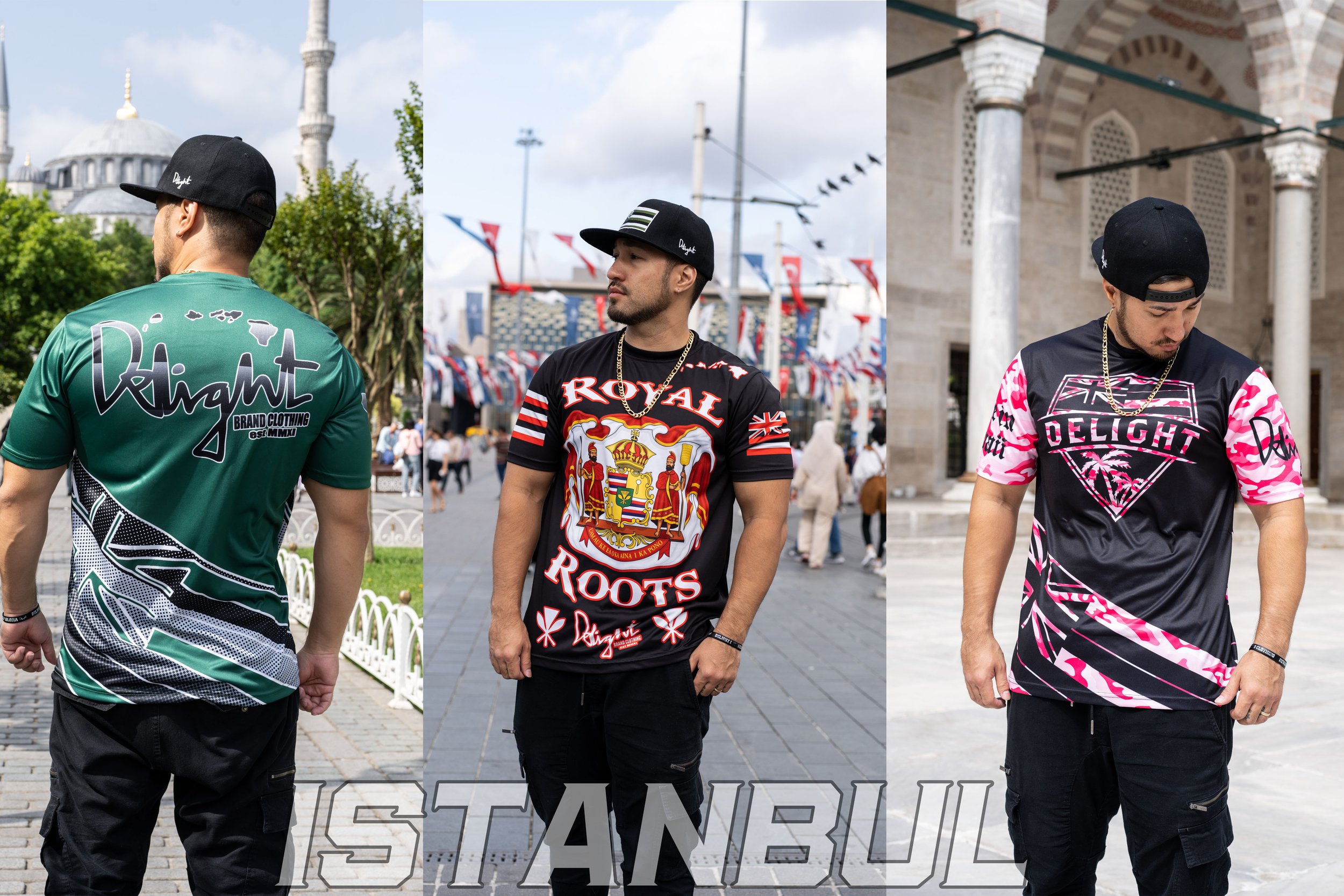Comprehending Clothes: The Value of Fabric Choices in Your Closet
The option of textile in clothes plays an essential function in both aesthetic appeals and performance. Various products use differing degrees of sturdiness, convenience, and breathability, straight influencing the user's experience. Recognizing these subtleties can boost one's closet markedly. Yet, several neglect exactly how these choices can affect not just personal design, however also sustainability. What fabric decisions could redefine your wardrobe and align it with both style and obligation?
The Function of Material in vogue and Performance

Common Textile Types and Their Characteristics
When selecting clothing, understanding the attributes of typical material kinds is essential for making educated choices. Cotton, a widely-used all-natural fiber, is known for its versatility, softness, and breathability, making it ideal for sportswear and daily garments. Linen, an additional natural alternative, flaunts excellent moisture-wicking homes and an unique appearance, suitable for cozy climates.Wool, commonly preferred for its heat and toughness, differs in fineness; merino woollen is soft versus the skin, while coarser types are used for outerwear. Artificial fabrics like polyester and nylon use resilience and resistance to creases, making them popular for activewear and traveling garments. Lastly, blends, which incorporate artificial and all-natural fibers, can boost capability while maintaining convenience. By acknowledging these material features, people can select clothing that lines up with their way of living and visual choices.
Breathability and Comfort: Selecting the Right Fabrics for Various Environments
Picking the right fabrics for numerous climates can considerably boost comfort and general wearability. Breathable products are vital in hot environments, as they allow air flow and wetness dissipation. Fabrics such as cotton, bed linen, and moisture-wicking synthetics effectively draw sweat far from the body, keeping the user cool and completely dry. On the other hand, in colder environments, thicker fabrics like wool or fleece give insulation while retaining breathability, making sure heat without overheating.Additionally, the option of fabric weight plays a vital duty; lightweight textiles are more effective for summertime, whereas larger choices are fit for winter wear. Understanding the unique residential or commercial properties of each textile makes it possible for people to clothe suitably for differing weather. Ultimately, picking breathable and comfy fabrics tailored to particular climates can significantly boost daily comfort and improve the overall experience of using clothing.
Sturdiness and Treatment: How Material Influences Longevity of Your Closet
Choosing the right products can significantly influence the longevity and care requirements of a wardrobe. Fabrics such as cotton and polyester are known for their durability and simplicity of maintenance, making them ideal for daily wear. In comparison, delicate materials like silk and shoelace call for more cautious handling and specialized cleaning approaches, which can raise the time and effort required for care. Branded Clothing.Durability is also affected by the textile's weave and coating; firmly woven fabrics often tend to withstand wear and tear better than loosely woven alternatives. Furthermore, artificial blends commonly provide enhanced toughness, integrating the most effective qualities of several fibers.Understanding the care instructions for each fabric is vital, as improper washing or drying out can lead to premature wear. Eventually, picking resilient materials can lead to a longer-lasting wardrobe, reducing the frequency of substitutes and adding to a much more lasting style option
The Impact of Fabric on Fit and Shape

Lasting Fabric Selections: Making Eco-Friendly Choices
The influence of fabric expands past fit and shape to include environmental variables, triggering an expanding rate of my company interest in lasting textile selections. Green textiles, such as natural cotton, hemp, and Tencel, are obtaining traction among consumers who prioritize sustainability in their closets. These products are often created with less chemicals and water, decreasing their environmental footprint.Additionally, recycled materials, made from post-consumer waste, offer an ingenious service to the fabric market's contamination problem. Brands progressively embrace openness in their sourcing methods, allowing customers to make educated choices regarding their purchases.Choosing lasting fabrics not just sustains honest practices yet likewise encourages the style sector to adopt more accountable manufacturing Going Here approaches. As recognition of environmental problems climbs, individuals are advised to show on the lasting influence of their textile choices, cultivating a motion towards a more sustainable and ecologically mindful method to fashion.
Raising Style: Exactly How Material Can Change an Attire
While several may concentrate on shade and cut when choosing a clothing, the option of textile plays an essential duty in boosting design and improving overall look. Different products convey unique state of minds and messages; for instance, silk emanates luxury and class, while jeans provides a casual, loosened up vibe. The texture and drape of a material can dramatically alter the silhouette, with organized fabrics providing a refined look and softer ones developing a more fluid, kicked back aesthetic.Moreover, the weight of the textile affects wearability across periods. Light-weight fabrics like linen and cotton are excellent for summer, while much heavier products such as wool and velvet provide heat and beauty in chillier months. Understanding textile residential or commercial properties, such as breathability and stretch, additionally empowers individuals to make educated choices that enhance convenience without endangering design. Ultimately, the appropriate textile can change an attire from common to remarkable, making it a crucial consideration in any type of wardrobe.
Frequently Asked Concerns
How Do I Recognize the Textile Material of My Clothes?
To identify textile content, one can take a look at care tags, conduct shed examinations for fiber recognition, or get in touch with material swatches. site link These techniques help set apart products, making sure informed selections for apparel care and upkeep in everyday wear.
Can Fabric Selection Affect My Mood or Self-confidence?
Material choice can significantly influence an individual's state of mind and self-confidence. Branded Clothing. Specific products might stimulate feelings of convenience or sophistication, while others can feel unflattering or restrictive, ultimately influencing self-perception and psychological wellness throughout the day
What Fabrics Are Best for Sensitive Skin?
For individuals with delicate skin, all-natural textiles like bamboo, cotton, and linen are typically advised. These materials are breathable, hypoallergenic, and less likely to trigger inflammation, making them suitable options for comfort and skin health and wellness.
Just how Do I Appropriately Clean and Take Care Of Various Fabrics?
To correctly care and clean for different textiles, one should consider each product's particular requirements, including temperature settings, detergents, and drying out methods, making sure longevity and maintaining the fabric's original high qualities for suitable usage.
Are There Particular Fabrics for Athletic or Performance Use?
Sports or performance wear commonly makes use of materials such as polyester, spandex, and nylon. These products are created for moisture-wicking, breathability, and flexibility, improving activity and comfort throughout physical activities while providing toughness and support. Alternatively, in cooler climates, thicker materials like wool or fleece give insulation while maintaining breathability, making certain heat without overheating.Additionally, the option of fabric weight plays a vital role; light-weight fabrics are more suitable for summer season, whereas much heavier choices are fit for winter season wear. In contrast, delicate materials like silk and lace call for more mindful handling and specialized cleansing techniques, which can increase the time and effort required for care.Durability is also influenced by the fabric's weave and coating; snugly woven fabrics have a tendency to withstand wear and tear better than freely woven options. In contrast, rigid textiles can limit activity but provide a classic, sleek look.Moreover, the thickness and appearance of the material can influence the aesthetic assumption of body form. The effect of textile prolongs beyond fit and shape to encompass ecological elements, motivating a growing interest in sustainable fabric selections. The texture and drape of a textile can substantially modify the shape, with structured textiles supplying a refined look and softer ones creating a much more fluid, relaxed aesthetic.Moreover, the weight of the material affects wearability across periods.